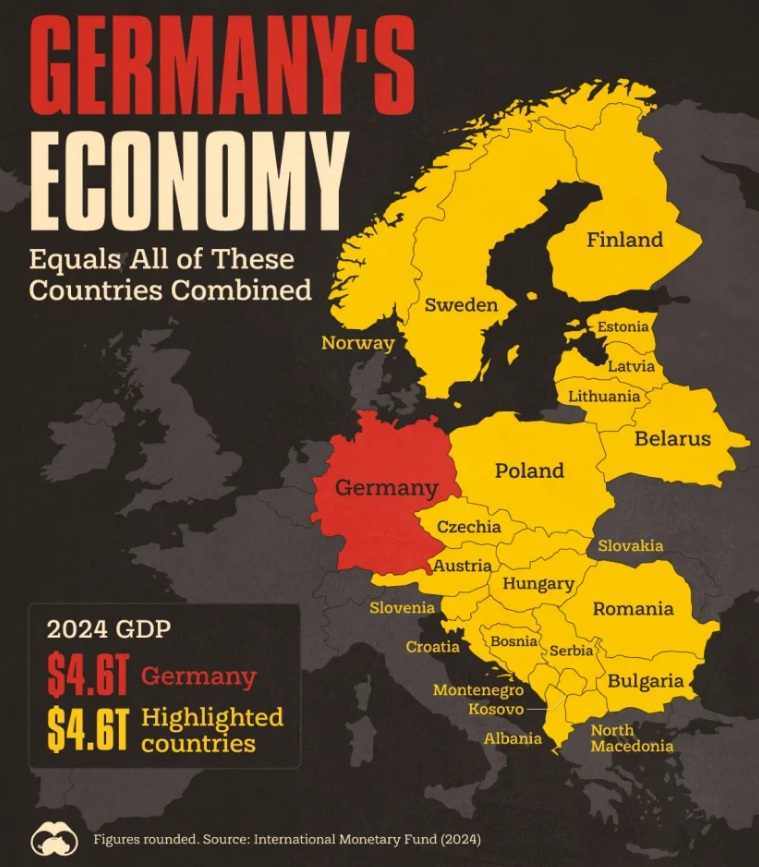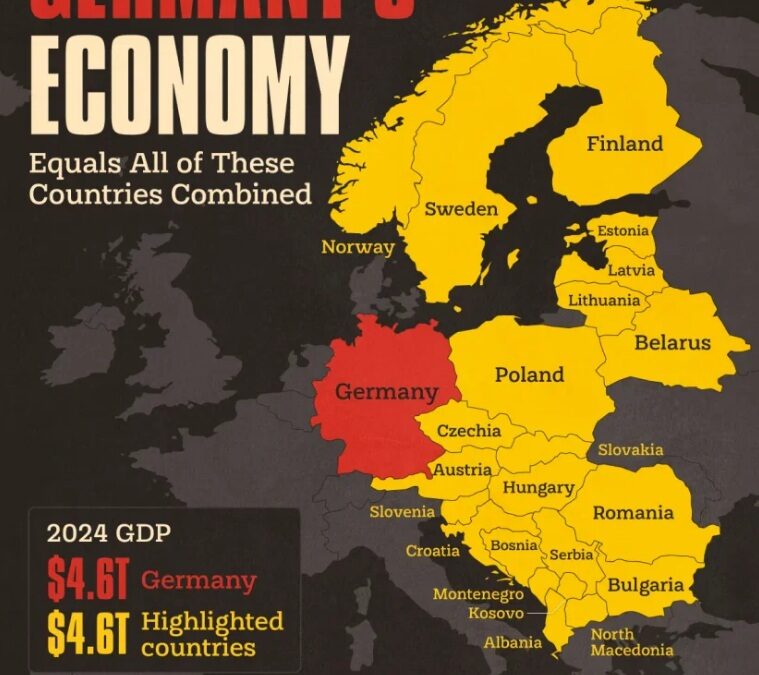Germany’s economy is as big as 22 neighbour states. Germany, on its own, produces as much economic output as 22 of its neighboring countries combined. This isn’t just a surprising fact — it’s a powerful illustration of the massive economic gap within Europe. One Germany equals the total GDP of countries like Poland, Sweden, Austria, Czechia, Romania, Finland, Hungary, and all the way down to North Macedonia and Albania.
While these 22 countries are home to over 200 million people, their collective economic output still only matches that of Germany — a single nation of about 83 million. This isn’t just a number. It’s a wake-up call.
Germany isn’t just an engine of the European Union — it is the engine. And this visualization underscores how vast the economic gap has become between Western Europe’s industrial powerhouse and its eastern and southeastern neighbors.
This imbalance carries weighty implications:
✔️ Germany is Europe’s largest economy, contributing significantly to the EU.
✔️ The 17 highlighted countries together match Germany’s GDP, despite their larger combined population and land area.
✔️ This showcases Germany’s strong industrial base, exports, and economic influence.
Meanwhile, many of the countries in yellow on the map face brain drain, slower development, and fragile growth. The region is rich in potential, but struggles to keep up in a race where Germany has long been sprinting.
It’s time for bold policies, smarter investments, and deeper regional cooperation — because an economically balanced Europe isn’t just fairer. It’s stronger.
Original link: https://www.voronoiapp.com/economy/Putting-Germanys-Economy-in-Perspective-2409


